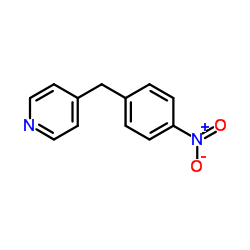Connecting the chemical and biological reactivity of epoxides.
Marina González-Pérez, Rafael Gómez-Bombarelli, Jorge Arenas-Valgañón, M Teresa Pérez-Prior, M Pilar García-Santos, Emilio Calle, Julio Casado
文献索引:Chem. Res. Toxicol. 25(12) , 2755-62, (2012)
全文:HTML全文
摘要
The chemical reactivity of the mutagenic epoxides (EP) propylene oxide (PO), 1,2-epoxybutane (1,2-EB), and cis- and trans-2,3-epoxybutane (cis- and trans-2,3-EB) with 4-(p-nitrobenzyl)pyridine (NBP), a bionucleophile model for S(N)2 alkylating agents with high affinity for the guanine-N7 position, was investigated kinetically. It was found that three reactions are involved simultaneously: the alkylation reaction of NBP by EP, which yields the corresponding NBP-EP adducts through an S(N)2 mechanism, and EP and NBP-EP hydrolysis reactions. PO and 1,2-EB were seen to exhibit a higher alkylating potential than cis- and trans-2,3-EB. From a study of the correlations between the chemical reactivity (kinetic parameters) and the biological effectiveness of oxiranes, the following conclusions can be drawn: (i) the hydrolysis reactions of epoxides must be taken into account to understand their bioactivity. (ii) The fraction (f) of the alkylating oxirane that forms the adduct and the adduct life (AL) permit the potential of epoxides as bioactive molecules to be rationalized even semiquantitatively; and (iii) alkylation of DNA by epoxides and the O(6)-/N7-guanine adduct ratio are directly related to their mutagenicity in vitro.
相关化合物
| 结构式 | 名称/CAS号 | 分子式 | 全部文献 |
|---|---|---|---|
 |
4-(4-硝基苄基)吡啶
CAS:1083-48-3 |
C12H10N2O2 |
|
Colorimetric assays for quantitative analysis and screening ...
2005-12-01 [Biotechnol. Lett. 27(23-24) , 1921-7, (2005)] |
|
2,4-dihydroxy-7-methoxy-2H-1,4-benzoxazin-3(4H)-one (DIMBOA)...
2015-12-02 [Int. J. Food Microbiol. 214 , 123-8, (2015)] |
|
The relationship between reactivity of metabolites of pyrrol...
1999-01-01 [Proc. West. Pharmacol. Soc. 42 , 13-6, (1999)] |
|
Clinical pharmacokinetics of cyclophosphamide and metabolite...
1994-12-15 [Cancer Res. 54(24) , 6421-9, (1994)] |
|
Mutagenicity of bisphenol A (4,4'-isopropylidenediphenol) in...
2002-01-01 [Teratog. Carcinog. Mutagen. 22(6) , 425-41, (2002)] |